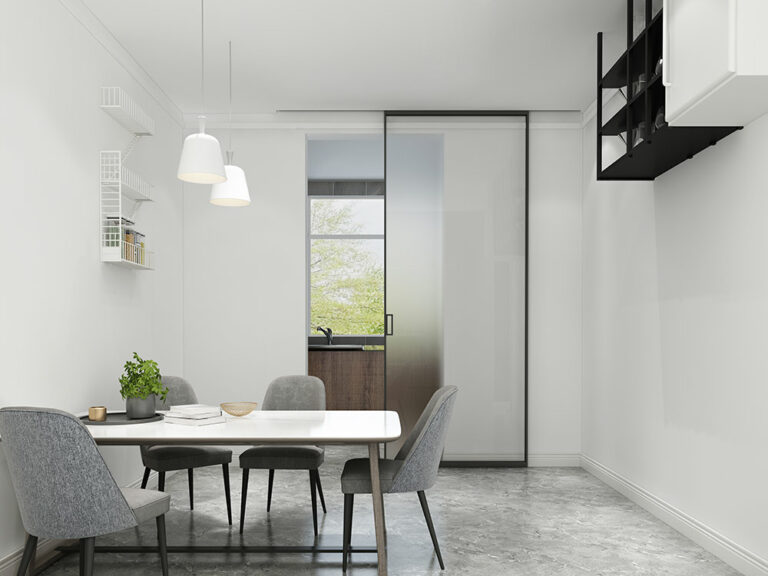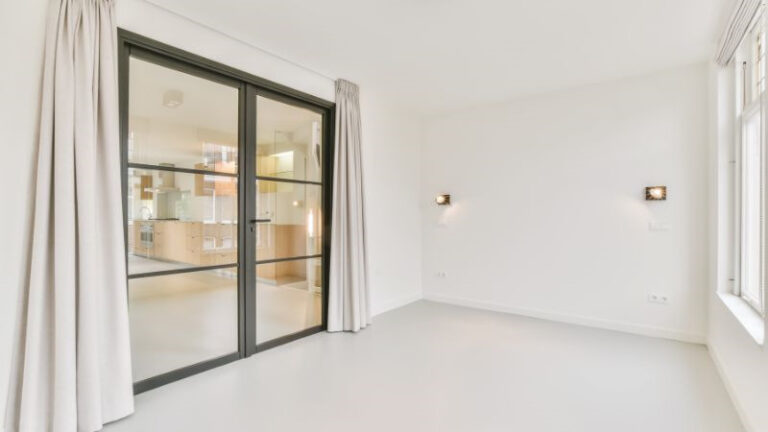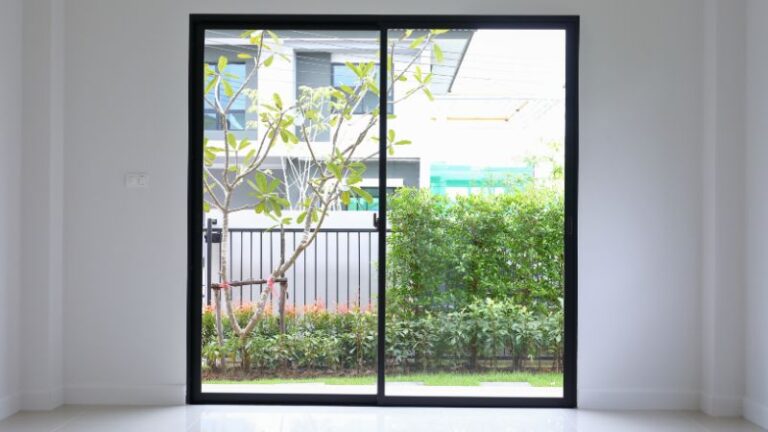Barn doors are a stylish and space-saving solution for many homes, but they can sometimes develop a frustrating problem: swinging back and forth on their track. This unwanted motion not only looks unsightly but can also cause the door to bang against the wall, leading to damage and noise.
Fortunately, there are several simple and effective ways to keep your barn door sliding smoothly and prevent it from swinging. In this guide, we’ll explore the most common causes of barn door swinging and the basic knowledge of barn door hardware, as well as provide step-by-step solutions to help you fix the issue.
From installing door guides to adjusting the track and rollers, these tips will make sure your barn door operates perfectly and enhances your home’s functionality and aesthetic.
Why Barn Door Swing?
Improper Installation and Alignment
One of the most common causes of a swinging barn door is improper installation. If the door hardware is not installed correctly or the door is misaligned on the track, it can cause the door to swing out from the wall as it slides. Ensuring proper installation with a 1 inch gap between the door and wall, and a 1/2 inch gap between the bottom of the door and the floor, helps minimize swinging issues.
Lack of Bottom Guides
Bottom guides or floor guides play a critical role in keeping barn doors aligned and preventing them from swinging out. If a bottom guide is not installed or installed incorrectly, the bottom of the door is free to swing away from the wall.
Uneven Floors or Tracks
Even a tiny incline or unevenness in the floor or track can cause the door to naturally want to slide open or close on its own. This movement can lead to a swinging motion.
Warping of the Door
Barn doors are susceptible to warping, twisting, and cupping, especially if the wood is not properly sealed and protected from moisture. A warped door will not hang straight, contributing to alignment issues and swinging.
How to Preventing Barn Doors from Swinging

To keep a barn door from swinging, you need to understand its basic mechanics. This involves knowing the essential components and the importance of correct installation.
Use Door Guides
Door guides are critical for keeping barn doors aligned and preventing them from swinging out. The most common types are:
- Floor Mount Standard Guides that fit into a groove routed in the bottom of wooden doors
- Floor Mount U-Channel Guides for doors without a bottom groove, like glass or meta
- Wall Mount Guides that attach to the wall as an alternative to floor mounting
Ensure Proper Installation and Alignment
Improper installation is a common cause of barn doors swinging. The sliding door must be hung plumb with adequate spacing from the wall (usually 1 inch) and floor (1/2 inch). The track must be level and securely fastened to solid blocking.
Use End Stops on the Track
End stops installed on the track prevent the door from sliding off the end and provide a stopping point. They are another important safety component.
How to Maintain the Barn Door

Maintaining your barn door is crucial for ensuring its smooth operation and long-lasting functionality. This involves regular cleaning, lubrication, and inspecting for wear and tear.
Regular Cleaning and Lubrication
To keep your barn door running smoothly, you should clean it regularly. Dust and dirt can build up on the track and rollers, affecting the door’s functionality. Wipe the track with a damp cloth to remove any debris.
Don’t forget to lubricate the moving parts. Use a silicone-based lubricant on the rollers and track. This type of lubricant is ideal because it doesn’t attract dirt. Lubrication reduces friction, preventing damage from wear and tear.
Regular cleaning and lubrication not only enhance the door’s performance but also preserve its rustic charm. An overlooked yet simple task, maintenance can extend the life of your barn door significantly.
Inspecting for Wear and Tear
Regularly check your barn door for signs of wear and tear. Look for any rust on the hardware. Rust weakens the components and can cause the door to malfunction. Use the anti-rust spray to treat affected areas.
Ensure the door’s alignment is correct. A misaligned door may scrape against the floor or frame, causing damage. Adjust the hinges or track as needed.
Examine the rollers and tracks for damage. If the rollers are worn out or the track is bent, replace them with quality hardware. Regular inspections help catch problems early, preventing costly repairs and keeping your barn door in top shape.
Frequently Asked Questions
There are several effective ways to keep your barn door from swinging. Additionally, using a floor guide can help stabilize double barn doors.
What are the best methods for securing a sliding barn door?
Ensuring a proper level and balance is crucial. It’s important to use a level to check that the door is straight. Installing stop blocks at the bottom of the door frame can also prevent excessive swinging. Another method is using chains to create tension, keeping the door steady.
Can you recommend a floor guide for a double barn door?
Yes, a door guide can be very useful for double barn doors. Look for a guide that’s easy to install and suits your door’s size. This can help keep both doors from moving excessively, ensuring they stay aligned and functional.
What is sliding door hardware?
Commonly, there are hangers, rollers, guides, locks, pulls, and other accessories.
What should I do if I want to make my barn door fit my interior design?
The key is choosing a barn door with colors, materials, and design details that intentionally connect it to the rest of your interior décor.
With so many options for customization, from rustic reclaimed wood to sleek glass panels, you can find or DIY a barn door that is perfectly adjustable.






